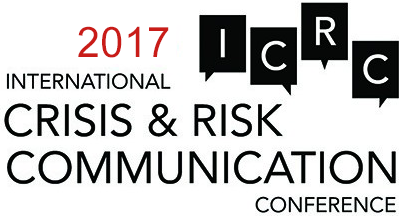
Assistant Professor, Communication Studies
University of North Florida
United States of America
Margaret C. Stewart (Ph.D., Indiana University of Pennsylvania, 2013) is an Assistant Professor of Communication Studies at University of North Florida in Jacksonville. Dr. Stewart also holds a Master of Arts in Professional Communication from La Salle University in Philadelphia and is a certified social media strategist and trainer for the National Institute of Social Media (NISM). Her teaching responsibilities include instructing upper-level undergraduate courses in professional public speaking and social media. Her research expertise is in the area of social media and emerging communication technologies. She primarily explores their interpersonal and organizational effects among military-affiliated and sports-athlete populations, as well as in crisis communication, fan engagement, and social listening. To date, she has published in Communication Reports, The Journal of Technologies in Society, Computers in Human Behavior, and the Journal of Communications Media.
Bridging the gap in social media crisis communication: Pedagogical applications of the STREMII model
Co-Presenter: Cory Young, Ph.D., Ithaca College
Stewart and Wilson (2016) introduce a new model—STREMII (pronounced STREAM-ee)—as a way to assist organizations with crisis communication via social media during a crisis event. This new model represents a cyclical process of six interconnected elements: (1) social listening, (2) audience, (3) response, (4) monitoring and evaluating, (5) interacting, and (6) implementing changes. The ideology behind this model of social media crisis communication stems from situational crisis communication theory (SCCT) (Coombs, 2007). The original application of the model was to analyze the social media activity relating to the crisis lifecycle according to the events of Hurricane Sandy. The steps of STREMII are examined using three commonly-recognized models to demonstrate the phases of a crisis lifecycle; Coombs (2014), Seeger (2006), and Seeger, Sellnow, and Ulmer (2003) identify a three-phase model, Fink (1986) presents a four step model, and Mitroff (1994) recognizes a five-stage crisis lifecycle.
Because this model is so new, there is an opening to gather feedback regarding the model’s effectiveness in an unfolding crisis, or post crisis. To that end, students enrolled in a crisis communication class Spring Semester 2016 will be given an opportunity, through a course assignment, to apply to the STREMII model when analyzing a current (or past) crisis. These applications will be evaluated to determine the potential outcomes of STREMII during crisis events, and seek out next steps for development. The purpose of this paper and presentation will be to provide the results of this project and discuss further iterations of the STREMII model.


